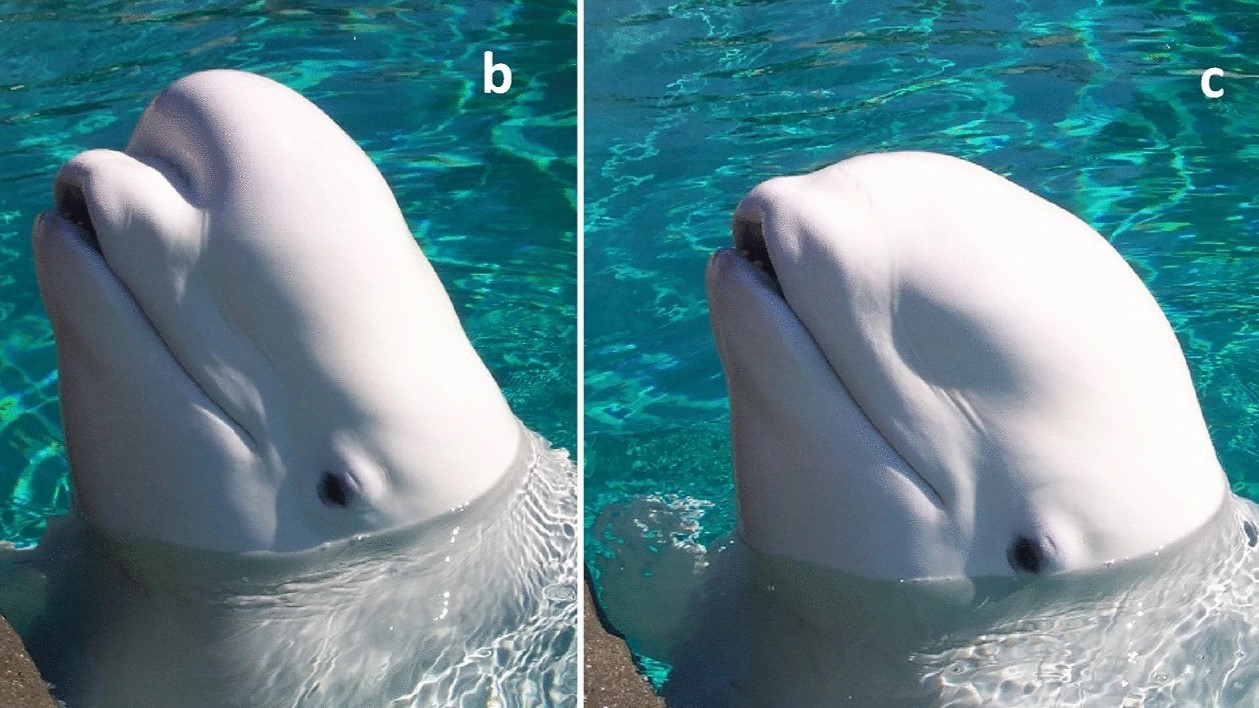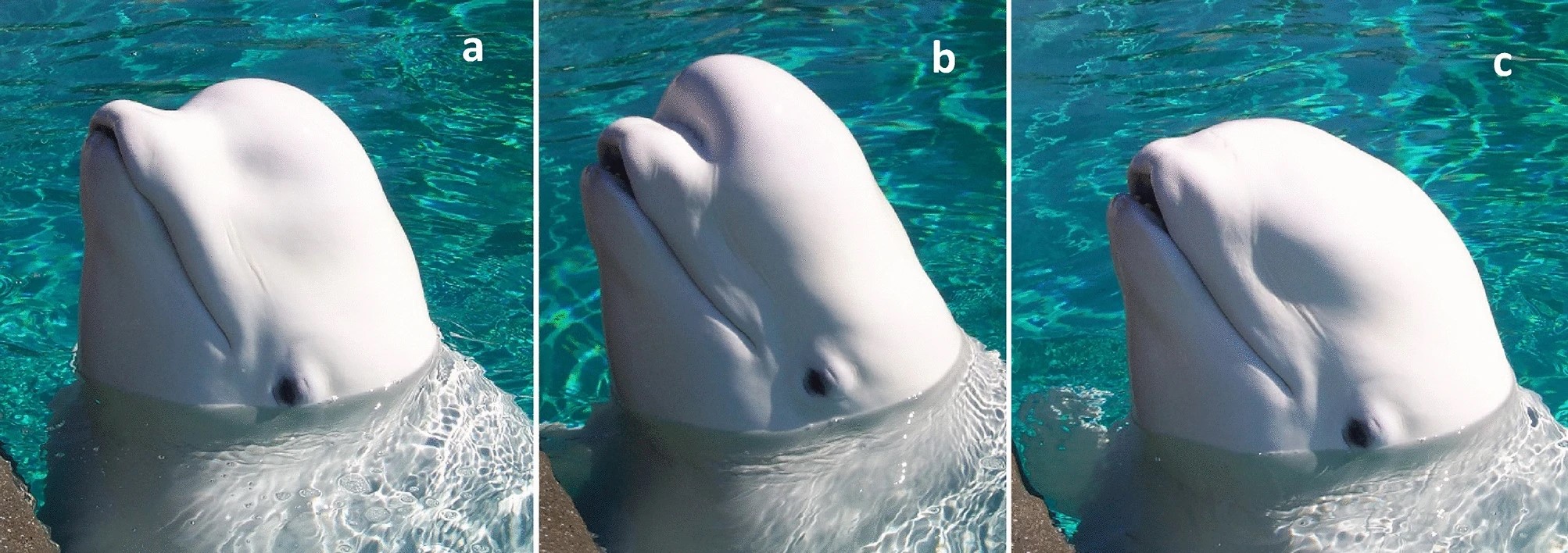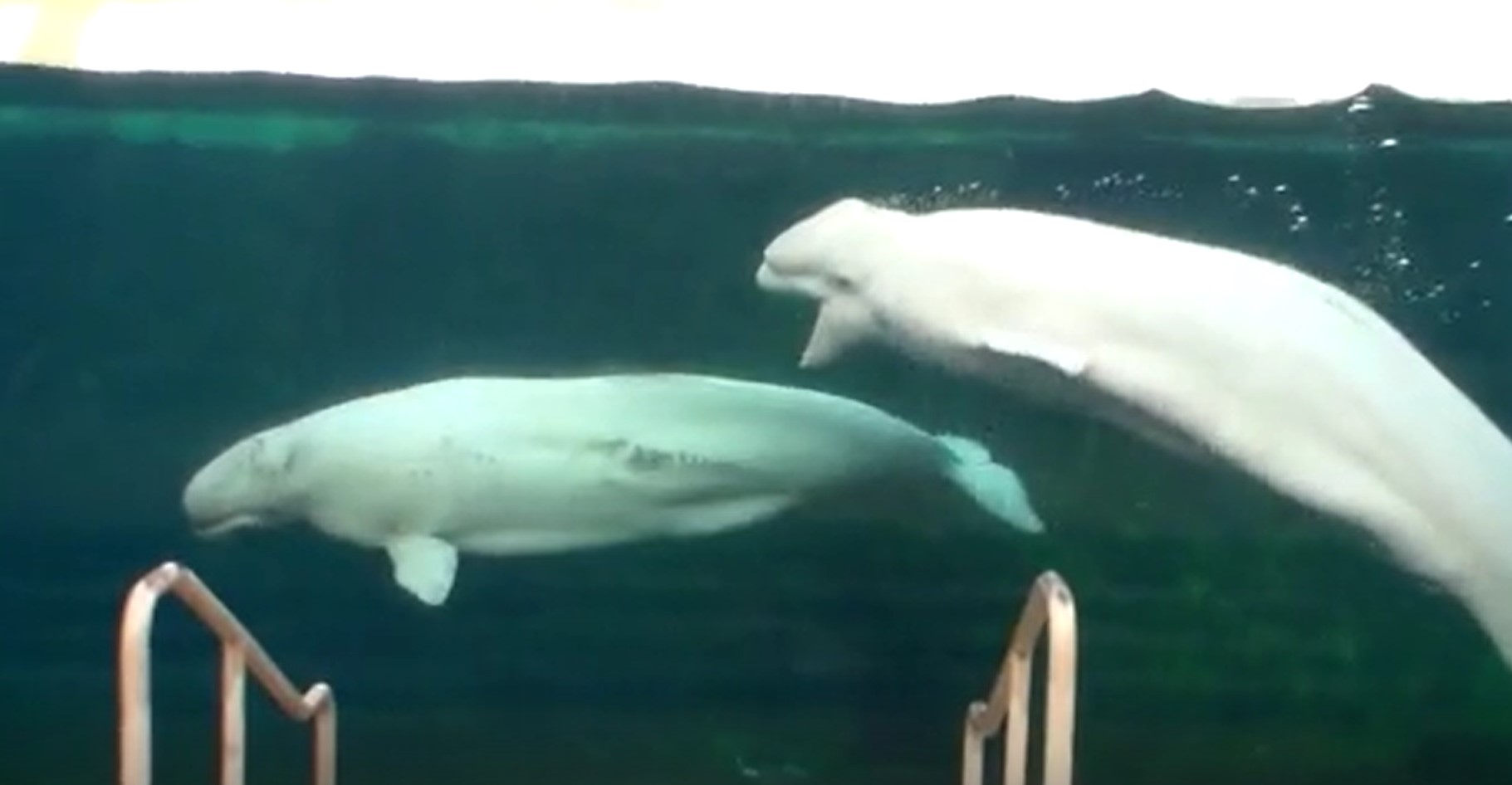
Beluga whales change the shape of their heads in order to express themselves and communicate with one another, researchers have discovered. They are the only toothed whales known to engage in this behavior, and scientists are now hoping to understand the role of this unique behavior in their social interactions.
Many mammals use facial expressions to communicate emotion and intent, but cetaceans are largely expressionless. While they do have facial muscles, their contractions are concealed by turgid, rubbery skin. In comparison, primates, dogs, pigs and other animals known to communicate using their faces have highly flexible facial skin.
According to a new study published March 2 in the journal Animal Cognition, belugas (Delphinapterus leucas) get around this by altering the shape of their melons — the bulbous protrusions at the front of their heads — to communicate with other whales.
These protrusions are composed of fatty tissue and are known to amplify auditory signals that are key to the whales' social interactions. But the scientists found that they may also serve as visual signifiers.
Related: Why some whales go through menopause
"Melon shapes seem to function as visual displays, with some characteristics of intentional communication," the researchers wrote in the paper. "This ability could yield adaptive benefits to belugas, given their complex social structure and hypothesized mating system that emphasizes pre-copulatory female mate choice."

The researchers identified five different types of melon shape — flat, lift, press, push and shake. Footage shows the shifting shapes during social interactions.
When the melon is flattened, it squashes downward, eliminating the curve at the top. When it is lifted, it extends above the skull, appearing taller than it does when relaxed. When the melon is pressed, it flattens along the top of the skull. When it is pushed, it extends forward above the upper jaw. And during the shake pattern, it wobbles back and forth.
In total, the researchers observed 2,570 expressions of these shapes in the study population — two male and two female belugas at Mystic Aquarium in Connecticut. Additional observations were made at MarineLand Canada in Ontario. Alterations to the shape of the melon mostly occurred in social contexts ranging from playful and amorous to aggressive, though they also occurred in non-social contexts.

"Melon shapes occurred 34 times more frequently during social interactions (1.72 per minute) than outside of social interactions (0.05 per minute)," the researchers wrote. "Melon shapes occurring during social interactions were performed within the line of sight of a recipient 93.6% of the time."
Males changed the shape of their melons three times as frequently as females, often during mating displays but also during sociosexual and aggressive encounters with other males.
The flat and shake patterns were most common during courtship displays. Flat and push patterns were most commonly observed during male socialsexual play, in which males interact in ways that elicit visible sexual arousal, affiliative encounters, where the whales form groups and swim alongside each other, as well as mouthing behaviors, which can be either aggressive or playful.
It is not yet known whether these facial expressions are produced as a reflex or whether they are intentional displays — or both. While they were cataloged in specific behavioral contexts, the exact meanings of the expressions also remain a mystery, the scientists said.
This research may be a crucial first step in understanding visual communication in belugas. Scientists already have a rough understanding of their sophisticated vocal repertoires, which include whistles, calls and echolocation clicks used in hunting. Analysis of their visual signaling capacities may provide further insight into how these highly intelligent mammals navigate their social interactions.
Editor's note: The headline of this article has been corrected after previously stating the behavior had not been documented before.







